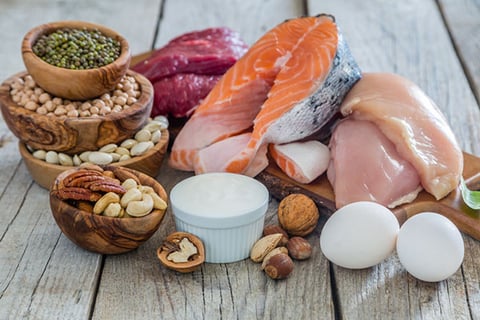Build a Stronger, More Beautiful You—Through Strength Training, Nutrition, and Community.
Navigating Perimenopause: The Impact of Weight Training on Women Over 50
Discover how resistance training can empower women over 50 during perimenopause. Learn about the hormonal changes affecting weight management and muscle building, and explore effective strategies to enhance your strength, maintain muscle mass, and support overall health through targeted weight training and nutrition. This comprehensive guide highlights the benefits of incorporating resistance exercises into your routine, tailored specifically for women navigating the challenges of hormonal changes and seeking to optimize their physical and mental well-being.
WEIGHT TRAININGHEALTH &NUTRITION
10/19/20244 min read


As women approach the age of 50, they often encounter a myriad of changes that can make maintaining their physical health a bit more challenging. Perimenopause, the transitional phase leading up to menopause, is marked by fluctuating hormones, which can significantly impact weight management, muscle mass, and overall well-being. However, this phase doesn’t have to be a struggle; with the right approach, women can navigate these changes effectively. This blog post explores the connection between resistance training and hormonal changes during perimenopause and offers actionable strategies to promote fat loss and muscle gain for women over 50.
Understanding the Hormonal Shift
During perimenopause, women experience a gradual decline in estrogen levels, leading to various physical and psychological changes. This decline is not just a minor adjustment; it can accelerate muscle loss and diminish strength, making it increasingly difficult to maintain muscle mass. Research indicates that this hormonal shift plays a significant role in the body’s composition and metabolism, which can contribute to weight gain and the loss of lean body mass.
Why Is Muscle Building More Challenging?
Estrogen plays a crucial role in muscle health and metabolism. Its reduction during perimenopause can lead to:
Increased Muscle Breakdown: A study published in the Journal of Clinical Endocrinology & Metabolism found that postmenopausal women have significantly lower muscle mass compared to premenopausal women, with a decline of approximately 1% per year after menopause . This highlights the necessity for women to actively engage in muscle-preserving activities.
Altered Fat Distribution: According to research from the American Journal of Clinical Nutrition, women often experience an increase in visceral fat during perimenopause, with abdominal fat increasing by about 10% per decade .
Decreased Strength: The decline in muscle mass correlates with reduced strength. A review in The Journal of Aging Research highlighted that muscle strength can decrease by as much as 15% per decade after age 50 .
The Role of Resistance Training
How Resistance Training Helps
Incorporating resistance training into a fitness regimen is vital for women in this transitional phase. Here’s how it can help counteract the effects of hormonal changes:
Prevents Muscle Loss: Engaging in regular resistance training can significantly reduce the risk of muscle loss. According to the Journal of Sports Medicine and Physical Fitness, strength training can help maintain muscle mass and may even increase muscle size in older women when done regularly .
Enhances Fat Loss: Strength training not only helps build muscle but also aids in fat loss. A study published in Obesity demonstrated that women who participated in resistance training three times a week for six months reduced their body fat percentage by 1.5% . As muscle tissue burns more calories than fat tissue, increasing muscle mass can elevate resting metabolic rate (RMR), helping to offset the decline in energy expenditure that occurs with age.
Improves Bone Density: Women are at a higher risk for osteoporosis during and after menopause. Resistance training has been shown to improve bone density by stimulating the bone remodeling process. A systematic review in Osteoporosis International indicated that resistance training can increase bone mineral density by 1-3% in postmenopausal women .
Practical Tips for Incorporating Resistance Training
To maximize the benefits of resistance training, women over 50 should consider the following:
Start Slowly: If you’re new to resistance training, begin with bodyweight exercises or light weights, gradually increasing intensity as you gain confidence and strength.
Focus on Major Muscle Groups: Aim for a balanced routine that targets all major muscle groups at least twice a week. Exercises like squats, deadlifts, and push-ups are excellent choices.
Consider Professional Guidance: Working with a personal trainer can provide tailored workout plans and ensure proper form, reducing the risk of injury, which is particularly important as we age.
Nutrition: Supporting Muscle Growth and Fat Loss
The Importance of Protein
As women age, their protein needs increase. A well-balanced diet that includes adequate protein sources—such as lean meats, fish, eggs, dairy, legumes, and nuts—can help maintain muscle mass and promote recovery after workouts. A study in The Journal of Nutrition suggests that women over 50 should aim for approximately 1.2 to 2.0 grams of protein per kilogram of body weight per day to effectively preserve muscle .
Managing Caloric Intake
With a decrease in overall energy expenditure due to hormonal changes, adjusting caloric intake becomes essential. Monitoring portion sizes and focusing on nutrient-dense foods can help manage weight effectively. Incorporate plenty of fruits, vegetables, whole grains, and healthy fats into your diet to support overall health and energy levels.
The Additional Benefits of Exercise During Perimenopause
Alleviating Menopausal Symptoms: Regular physical activity has been shown to alleviate many symptoms associated with perimenopause, including hot flashes, sleep disturbances, and mood swings. A study in Menopause found that women who engaged in regular exercise reported a 30% reduction in menopausal symptoms .
Enhancing Cognitive Function: Physical activity is not just beneficial for the body; it also plays a crucial role in maintaining cognitive health. Research indicates that resistance training can enhance cognitive function, which is particularly important as we age .
Promoting Longevity: Regular exercise, particularly strength training, is associated with a lower risk of chronic diseases such as diabetes, heart disease, and certain cancers. By promoting muscle and bone health, resistance training helps ensure a higher quality of life as women age.
Conclusion: Empowering Women Through Resistance Training
In summary, resistance training is an effective and powerful tool for women over 50, especially during the perimenopausal transition. By understanding the hormonal changes that occur during this time and proactively engaging in strength training, women can mitigate muscle loss, promote fat loss, and enhance their overall well-being.
It’s never too late to start a resistance training program. With the right approach, you can build strength, improve your body composition, and embrace the opportunities that come with this new phase of life. Empower yourself through strength training and enjoy the benefits it brings to both your physical and mental health.


Follow us on Social Media!
Join our movement today!
© 2025. All rights reserved.


